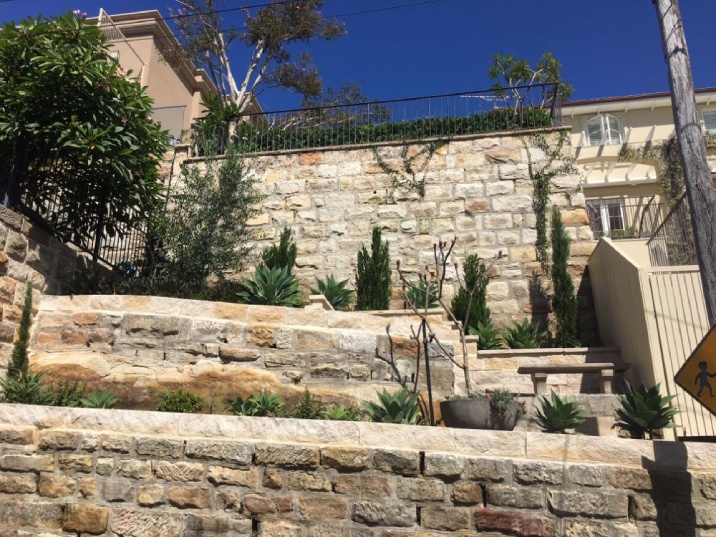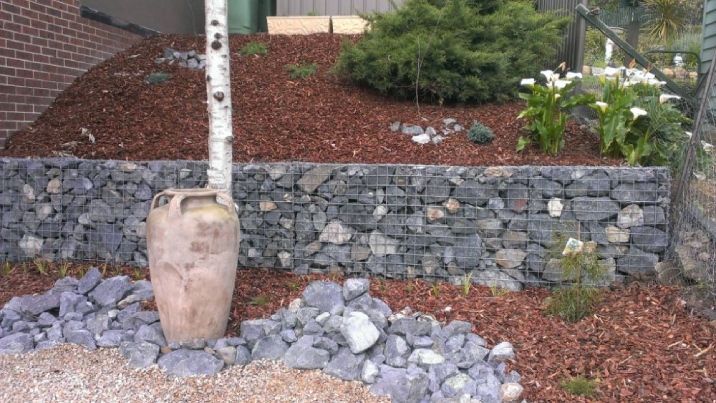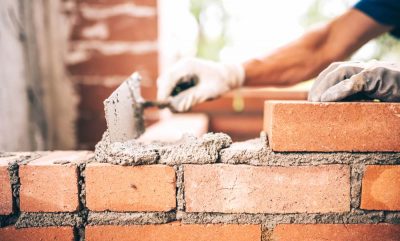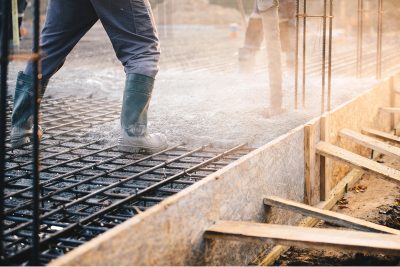- Oneflare /
- Cost Guides /
- Retaining Wall

How much does a retaining wall cost?
$140 - $650 per square metre
How Much Does a Retaining Wall Cost?
Australian residents can expect to pay around $250 per square metre for various quality-built retaining walls. However, simple retaining walls can cost as little as $140 per square metre. The overall retaining wall cost depends on the materials used, the wall’s size, and the labour price.
| City | Retaining Wall Cost Per Square Metre |
| Sydney | $150 |
| Melbourne | $200 |
| Brisbane | $250 |
| Perth | $70 |
| Adelaide | $400 |
What Is a Retaining Wall?
Retaining walls are structures primarily used to hold back soil and prevent erosion. They can also be used to create a garden or an outdoor living area. Depending on your design and budget, several materials can be used to create a retaining wall, including:
- Treated timber
- Poured concrete
- Concrete blocks
- Boulders
- Stones
- Brick
While retaining walls are generally low-maintenance, it’s essential to conduct routine inspections every few years to ensure structural integrity.
Price Estimates for Different Retaining Walls
There are many options when deciding which material will work the best. It comes down to the aesthetics you want and the service life of the retaining wall. Other concerns need to be addressed before you can obtain accurate price estimates. For example, your soil might not be suitable and must be replaced. Additionally, the impact of the retaining wall on other landscape features like swimming pools, gardens, and driveways should be considered.
Here’s how much different retaining walls cost per m2:
- Concrete sleeper retaining walls: $350 – $550
- Timber sleeper retaining walls: $250 – $350
- Brick retaining walls: $250 – $650
- Sandstone retaining walls: $200 – $500
Stone veneer retaining walls: $150 – $250
Factors Affecting Retaining Wall Costs
Several factors impact the overall cost of installing a retaining wall. For example, the retaining wall’s height, length, and design will add to the price. You can expect to pay more per square metre for interlocking reinforced concrete blocks than treated pine logs or hardwood timber sleepers. Excavation of the project site and a proper drainage system also increase the price.
Other factors that affect the price of building concrete retaining walls can include:
- Obtaining required building permits
- Hiring a structural engineer
- Designs with curves and special features
- Removal of the existing landscape
- Labour costs for retaining wall builders

Large sectional sandstone retaining wall. | Source: Modern Landscaping
Tips for Hiring a Retaining Wall Builder
Since your retaining wall projects and walls can be a substantial investment, hiring the right builder is essential to get your money’s worth. Property owners should find retaining wall builders with experience working with different materials and soil to achieve lasting results.
Once you’ve contacted multiple retaining wall service providers, you can perform a background check on potential candidates.
- Ensure they provide valid copies of their Builder’s Licence and insurance policy.
- Request photos of previous work performed.
- Ensure they can answer all of your questions and provide solutions.
- Get a detailed list of materials and work to be performed.

A large gabion retaining wall. | Source: Into The Wild
Getting Accurate Estimates
When building a retaining wall, no two projects are the same. Therefore, you should obtain many proposals from reputable local retaining wall builders to create an accurate estimate.
Professional retaining wall builders can also help obtain the required permits from your local council, and in most cases, you can get a price that includes every detail of the retaining wall job. Having multiple quotes is a great way to see what this project will cost you.
Licences or Qualifications
Most states require retaining wall contractors to be licenced. If the height of your retaining wall is more than one metre, you will need a structural engineer to get your building permit. In some states, the minimum height requirement can go as low as 600 mm. However, checking with the council before construction begins is always best.
Boundary line restrictions also apply for retaining walls less than 1.5 metres from another structure or your property line, regardless of height. If so, you will need council approval to construct your retaining wall.
Additionally, to prevent property damage or injuries due to improper construction, it’s vital to check the status of your contractor’s licence.
Reducing Retaining Wall Construction Costs
Building retaining walls can be costly, but there are several ways to save money without compromising the quality of your project. Here are a few tips to consider for small retaining walls:
- Choose the right material: There are many retaining wall materials, each with a different price range. Timber can be more cost-effective than stone, poured concrete, and other standard options.
- Plan well: Proper planning is crucial to avoiding costly mistakes and delays. Work with a professional contractor to develop a detailed design and plan for your retaining wall and stick to it to minimize material waste and labour costs.
- Consider alternatives: Depending on your specific needs and budget, alternatives to traditional retaining walls, such as terracing or hardscaping, could be a more cost-effective option.
- DIY where possible: Consider completing some of the less technical aspects of the construction process, such as excavation or cleanup, to save money on labour costs.
By keeping these tips in mind and working with an experienced contractor, you can save money and ensure your retaining wall project stays within budget.
* The cost data is based on Oneflare and third-party sources


